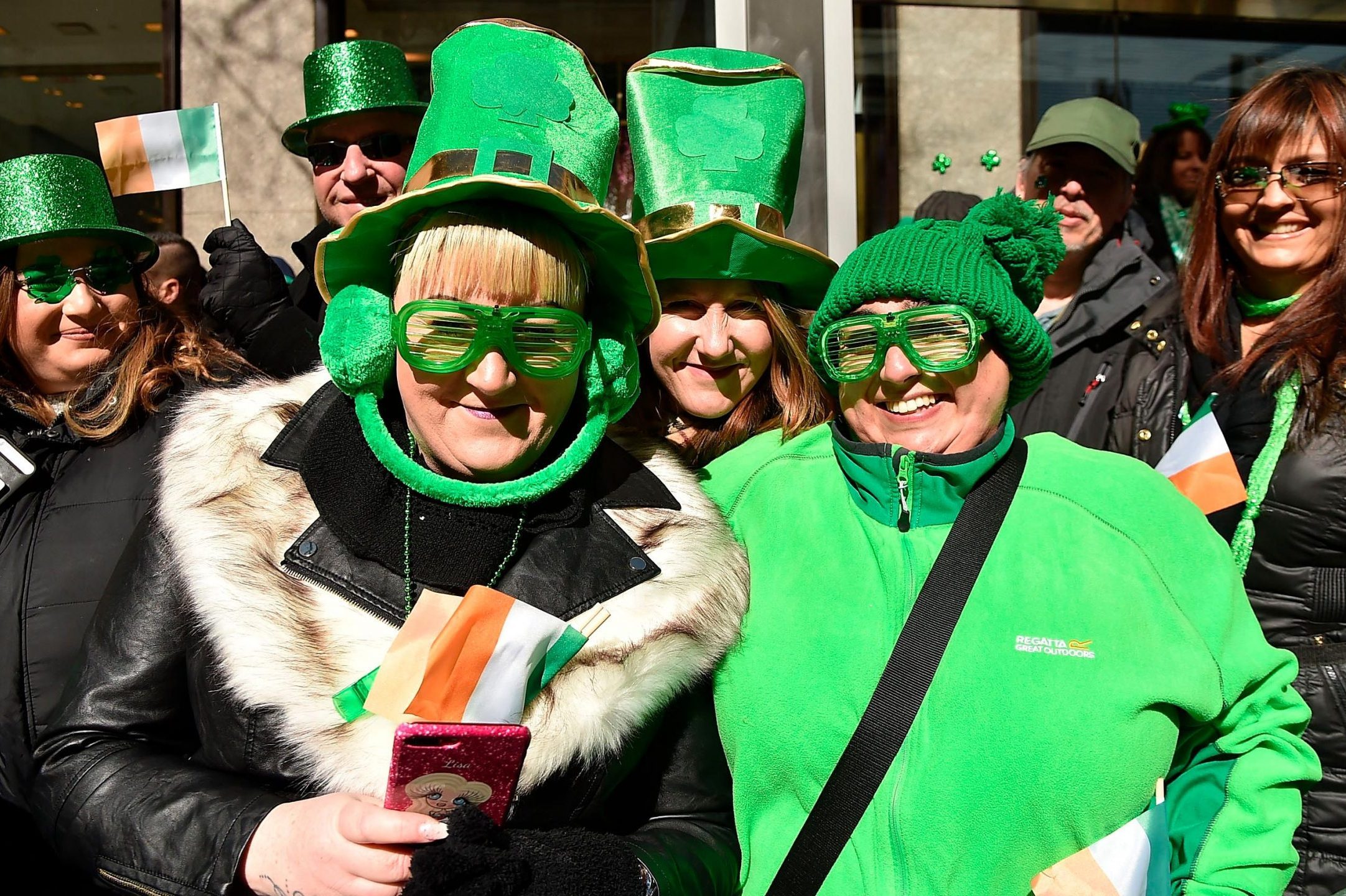Happy st. patrick's day
St. Patrick's day
St. Patrick's Day is a cultural and religious celebration observed on March 17 in remembrance of Saint Patrick, the patron saint of Ireland. The holiday was first observed in Ireland but is now widely observed, especially in locations where there are sizable Irish populations.
Wearing green clothes and accessories, which has come to represent Irish culture and tradition, is one way the day is typically observed, along with parades, festivals, and other cultural activities. On this day, it's also popular to eat and drink traditional Irish fare like corned beef and cabbage, soda bread, and Guinness beer.
St. Patrick's Day has gained popularity as a holiday that is observed by people from a wide range of backgrounds and is frequently characterised by a joyous and festive mood.
St. Patrick's Day is a celebration of Irish culture and tradition that has come to be known for its joyous and jovial mood, which is highlighted by parades and festivities. Although the festival began in Ireland as a religious celebration commemorating the nation's patron saint, it has now developed into a global cultural celebration, especially in locations where there are sizable Irish populations.
The Catholic Church created March 17th as a day to celebrate St. Patrick, the patron saint of Ireland, in the early 17th century, which is when St. Patrick's Day first became a recognised holiday. It is thought that St. Patrick, a Christian missionary who is credited with introducing Christianity to Ireland, passed away on March 17th, 461 AD. In order to celebrate St. Patrick's memory, the day was first observed as a religious festival, with churches performing services and people going to Mass.
Yet as time went on, St. Patrick's Day became a more secular occasion, and people from all walks of life joined in the fun. The day became a day to honour Irish heritage and culture in Ireland after it was observed there with parades, festivals, and other cultural activities. St. Patrick's Day was also observed by wearing green, which came to be connected with the occasion as a result of its connection to Ireland's flag and its verdant surroundings.
St. Patrick's Day started to become celebrated outside of Ireland as Irish people started to immigrate to other nations and establish themselves there. St. Patrick's Day was originally observed in Boston, Massachusetts, in the United States in 1737, and Irish immigrants made it a prominent holiday in the late 19th and early 20th centuries. St. Patrick's Day is now observed in a large number of nations, including those in the United States, Canada, Australia, and New Zealand.
The parade, which is conducted on St. Patrick's Day in numerous cities and villages worldwide, is one of its most recognisable aspects. Since the first St. Patrick's Day celebration in New York City took place there in 1762, the procession there has grown to become one of the biggest in the world, with more than two million spectators annually. The parade, which is a hallmark of the city's St. Patrick's Day celebrations, includes marching bands, bagpipers, floats, and other vibrant displays.
The celebration of St. Patrick's Day includes a parade as well as various cultural activities like traditional Irish music and dance performances and the consumption of Irish food and drinks. On St. Patrick's Day, dishes like soda bread, a straightforward and filling bread made with flour, buttermilk, and baking soda, are popular as well as the traditional Irish-American dinner corned beef and cabbage. On St. Patrick's Day, many people drink Guinness beer, an Irish beer that is rich and black.
Although St. Patrick's Day is a time for fun and festivities, it is also a time to consider the contributions that Irish people have made to the world, particularly in the areas of music, literature, and the arts. James Joyce, W.B. Yeats, Samuel Beckett, and other well-known authors as well as artists like U2, Sinead O'Connor, and Van Morrison were all born in Ireland. The occasion to honour Irish history and heritage, particularly the people's hardships in the past and their contributions to society, is provided by the holiday.
St. Patrick's Day celebrations have spread across numerous nations in recent years, making it a more universal occurrence. Although though the festival still has Irish roots and heritage, it has evolved into a celebration of diversity and inclusivity.
Conclusion
In conclusion, St. Patrick's Day is a holiday that has changed over time from a celebration of Irish culture and heritage to a religious observance. While having its roots in Ireland, it is now a worldwide holiday, especially in places where there are sizable Irish populations.
Many activities, such as parades, festivals, and other cultural celebrations, are held to honour the holiday. On St. Patrick's Day, it's also usual to eat and drink traditional Irish fare like corned beef and cabbage and Guinness beer.
Although St. Patrick's Day is a time for fun and festivities, it is also a time to consider the contributions that Irish people have made to the world, particularly in the areas of music, literature, and the arts. The occasion to honour Irish history and heritage, particularly the people's hardships in the past and their contributions to society, is provided by the holiday.
Because to the participation of people from diverse backgrounds and religious convictions, St. Patrick's Day has come to represent inclusivity and the celebration of diversity. St. Patrick's Day is a day to gather together in a spirit of fun and camaraderie whether you are Irish or not to celebrate the things that make us all special.
Since successive generations of people observe the occasion in their own unique ways, it is probable that St. Patrick's Day will continue to alter and evolve as we look to the future. But one thing is certain: the festival will always serve as a celebration of the qualities that unite us as people and a reminder of the rich history and culture of Ireland.




No comments